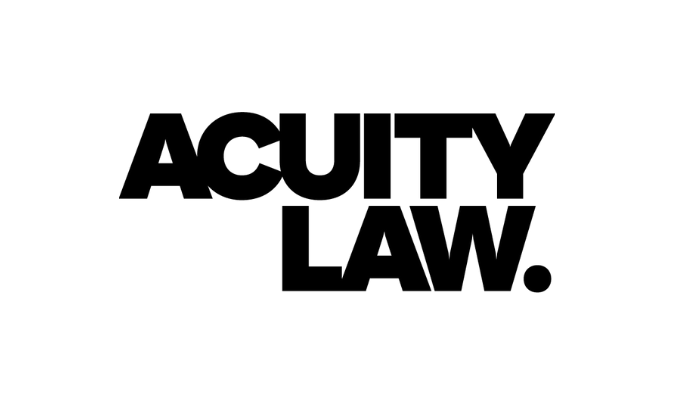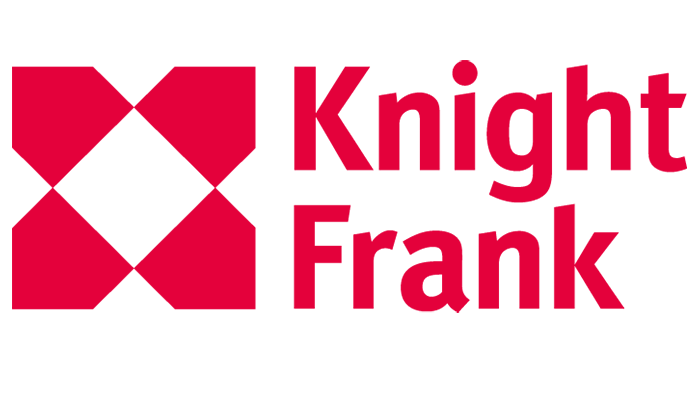Acuity Law partner Jenny Wilde gives the lowdown about incoming changes to The Care Quality Commission (CQC) regulatory regime coming in Autumn 2023.
Sponsored Content‘Finding value’ in UK care: Sustainable investing in a dynamic market…


Deploying capital into the UK care sector makes a lot of sense. Shifting demographics is creating significant demand in a provider market that remains fragmented and relatively immature. With the vast majority of the care estate built over 40 years ago, the requirement for direct investment in new capacity is profound.
Despite the compelling drivers, in reality, deploying capital into the UK care sector requires a great deal of consideration and expertise. Local-authority funded care operators are facing the twin threats of flat fees and rising staffing costs. And while the private pay market continues to attract investment, there are areas of oversupply and signs we may be reaching a ceiling in pricing.
In this shifting market, then, where is the ‘smart capital’ investing? What areas – both geographically, and across the subsectors – are performing best? Which investment structures are generating the best returns – and how sustainable are they?
To explore these issues and further consider the role of private capital in the UK care market, on 8 October HealthInvestor UK and sector specialist law firm Druces hosted a round table discussion in central London involving leading investors and advisors to the sector.

Vernon Baxter: Bruce – you recently went through a major transaction with Aedifica entering the UK market. Having gone through that process with their team, what was their assessment of the market fundamentals?
Bruce Walker: First of all, it’s great to be dealing with a very knowledgeable investor that already understands care. They participate in markets across Europe and when they look at
the UK they see similar dynamics and demographics. One of the key differences, which represents an opportunity in their eyes, is there hasn’t been as much development as there has been across the rest of the continent – the number of beds isn’t increasing.
Vernon Baxter: Andrea, Elevation is building itself a platform in this market. If the development pipeline is blocked, how do you go about a growth strategy?
Andrea Auteri: I don’t think there’s scarcity of opportunities – it’s just we’re very selective in the partners we choose. In terms of the sites we see, we actually only invest in around one tenth of the opportunities. Doing development is incredibly complex and it’s very risky. Sometimes I feel that there are parties in the market that do not price that risk appropriately. There is a similar tendency to underestimate the complexity of the new set up after the building has actually been finished. We find that the fill-up takes a lot longer these days. We’ve gone from a couple of years to probably three years, if not three and a half.
Vernon Baxter: Andrew, you’ve taken AXA into the housing-with-care market in the UK – what motivated that decision?
Andrew Ovey: The Retirement Village Group investment was all about recognising there is a hole opening up beneath nursing care, and working out where that capital is going to come from. The demographic tells us about need – but demand is need with a cheque. I mean it’s a long, long time since we’ve
had a serious discussion about a solution
for adult social care. I did get excited
about Dilnot but I think that was eight years ago now.
Vernon Baxter: James, there seems to be a lot of capital chasing too few opportunities – is that what you’re seeing in your role?
James Hanson: It depends where you’re starting from. Whether you’re looking at a domestic market and established players, or whether you’re looking at the overseas capital looking to get into this seemingly robust UK market. We bought in Caryn Donahue from our Boston office last year, looking at the retirement living sector, because we saw that as one of the fastest growth sectors in the UK. The issue for those overseas players is trying to find that incumbent operational business to invest in, and then capitalise and help it grow. In the UK we don’t really have many options. The biggest players that were out there have already been bought up, so you then have to buy into those really strong management teams, and try and help them grow. If you’re going to do it organically it’s going to take you a long, long time. If you’ve got very strong income, 35-year leases and the institutional pension funds are coming in, and the right product, you’re seeing fantastic prices. But that’s not for everybody.
Vernon Baxter: Ian, AEW is starting to invest in this sector – could you share your thoughts on the opportunities here?
Ian Mason: The starting point is that care homes provide very good cash flow. We’re generalists, we will look to invest in any segment of the economy that needs property and demand exceeds supply. When you look at the demographics, it’s very appealing. One thing that attracted me to the care sector originally was that the whole investment market really took off. The slight worry now is that the investment market has decided it knows better than the operators – and the investors have decided to pay bond-like prices. The area that we’re attracted to is one where the pricing is based upon the fundamentals.
Mark Gross: I totally agree on the fundamentals, but one of our biggest barriers at Downing is finding the quality of management teams to work with. We typically invest with management teams at the earlier stage. We look at some core fundamentals – do they understand what they know, and what they don’t know? As a growth and development investor we have internal capability to support teams and ensure they get things set up properly. It’s not to say that management teams should always accept what we say is right. Actually, we don’t want them to do that – in fact, we’re worried if they do. But what we want to do is pose questions – have you thought about this? If the answer is yes, and it’s well thought through, then great. The value is in the operations, so if you’ve got the wrong team, you’ve leaving yourself very exposed.
Vernon Baxter: Chris, have you noticed a difference in the demands of your clients? How has their perception of the sector shifted in recent years?
Chris Axford: In today’s market there is a far greater recognition of the quality of the underlying business, and the delivery of care in particular. Making sure you’re getting good ratings and are able to achieve the uplift on fees that comes with it is vital. It makes a big difference to the underlying profits. The other noticeable shift has been the length of the hold periods – recent money that has come into the sector is designed to be long term and that has made a difference to the types of management teams that are coming into the sector.
Denis Knockton: The market has definitely changed. If we go back 10 years, it used to be more operator-driven. They would retain freeholds and use that to gear-up in order to make further acquisitions. What we’re seeing now, at the top of the market, is well-funded investors developing assets in the prime and super-prime space. The risk profile there is to build it and fill it. Once it’s filled the valuation multiples get quite toppy – so there’s then an ability to do a sale and leaseback, generate surplus funds and then reinvest them in further developments. The key to this is backing the right management team. You get a lot of people that come out of investment banking and decide that they want to consolidate the market and buy 50 homes. That doesn’t work. It’s making sure that you’ve got the right mix of operational skills, marketing skills and HR skills. Do they have the right people, and the right advisors around them in order to ensure they do it successfully?
Vernon Baxter: James, is this a market where investors should be setting the agenda? How do you see that relationship?
James Hanson: In my view, the operator should be the one that’s driving it – they’re the one at the coalface knowing really what’s going on in the market.
When you start having the investors trying to dictate terms, and not necessarily being completely in touch, that can create problems, and we’ve seen that in the past.
What we’re now seeing is landlord-tenant relationships becoming a lot more aligned and I think that’s only good for the market as the quality of care can improve.
Bruce Walker: There are some interesting dynamics around consolidation in this market. If you look at the big European operators, not a single one has come in and bought a UK platform. Why is that? Is there a benefit to having scale in the UK market? The only one I can see, demonstrably, is cost of capital, and that’s actually been the downfall whenever there’s been a big group. The major cost is staff – and there’s no real economy there, apart from some regional management savings. So where do the economies come in? It comes from finance and nearly every time it’s the capital structure that breaks when you create a group of real scale.
Claire Rigby: I think this is true at a care level, too. The big groups have struggled to have consistency across a portfolio – when there’s consolidation it is very difficult to bring everything together.
Mark Gross: It’s a classic case of big isn’t better in this market. It’s hard enough finding good quality staff – how do you manage this from the centre and still keep control of the quality?
Andrew Ovey: I would say that at HC-One they’ve done a cracking job of sorting through some of these issues. In 2012, this was a real problem business, but they’ve gone about dealing with things in a very different way.
Vernon Baxter: Ian, for a generalist investor, what is the impact of something like Four Seasons on investor confidence?
Ian Mason: I have the conviction to build up quite a big position in the senior living space in the UK, so it does take some explaining when something like Four Seasons happens. My argument has been that I haven’t been investing in the ‘big boys’, I have been targeting quality of care in the mid-market space and I have said on occasions, expect something nasty to happen to Four Seasons in the same way as something nasty happened to Southern Cross. But blame the capital markets for that, rather than the care sector itself.
Andrea Auteri: If I can draw a comparison between HC-One and Four Seasons – if you actually look at the post codes of the homes they are very similar. But HC-One has had a good management team and great governance for five, six years. It has probably doubled the Ebitda through acquisitions and organic growth since 2014. Four Seasons has probably decreased Ebitda by 70% across the same period because of a lack of management and lack of governance. Same market, identical properties, different management, different shareholders. And all of a sudden Four Seasons is being highlighted as the lightning rod for the care sector in the UK? I mean it’s unfortunate that the press will seize upon it, as we’ll have to suffer.
Bruce Walker: Just to pick up on what Andrea was saying, we took back two-thirds of our then exposure to Four Seasons because of those issues that we weren’t comfortable with – the structure and the management. It was the right thing for them – and its trading significantly better with regional smaller operators. As we’ve been saying, big is not always better.
Vernon Baxter: I’d like to finish by asking each of the participants to share what they feel are the key elements to sustainable investing in the sector… Mark, can you get us started?
Mark Gross: In terms of finding sustainable investments in this sector, management capability is key – as is being prepared to invest in that management team as they continue to grow. Anybody that has capital that’s restricted to short periods of time is on the back foot. You have to be prepared to stick with them longer term and having an open-end fund allows us to do that. It’s about getting the right asset in the right location, understanding the micro market, and having the people that can deliver the type of care that you’re looking for. If you get those dynamics right in the context of a local market, you should succeed.
Claire Rigby: In terms of the clients we’ve advised recently on the investment side, many have had a really clear strategy on not just geography but the quality of the asset – and the potential for that asset to develop in the longer term. The investors are becoming quite savvy and have a clear idea of what they want, but they also recognise the need to have strong management for that investment to work in the longer term.
Denis Knockton: Actually, I think it’s all about having the right asset in the right location, providing the right level of care for local demand. It’s also about supply. It’s disappointing that there’s so many beds coming out of the market and homes closing. I’d like to see more refurbishments, rather than rebuild, but ultimately we have to build more homes.
James Hanson: Having liaised with both investors and operators over the years, my advice is to prepare for the unexpected – keep on top of the management team, really understand what they’re doing and what their game plan is. If you really believe in that story, invest in it. Operators need to value their staff – they are the driving force behind the business, if you don’t look after them they will leave, and you’re then relying on agency staff. This bleeds your profits – then you’re in that spiral of decline.
Chris Axford: Investing in the quality of care delivered is going to be the difference – we’ve seen the organisations that succeed as the ones that put staff at the centre of the strategy. If you’re looking at sustainable investing for the future, you have to make sure you’re investing in the staff by putting care delivery at the fore.
Andrea Auteri: For us as a capital raiser in the sector, it’s important to understand what you want to go for. Be sure that you understand what the risk is in the sector and make sure that it pairs up with the return expectations. A lot of the time the perception of the lack of sustainability comes from a misalignment between expectation of risk and hence return. You have to understand the fundamentals of the sector.
Bruce Walker: One of the things we try and focus on is: where is the model of care going? I think our job is to match the infrastructure of the real estate to the changing models of care. This is in constant motion and we need to be responsive to that.
Ian Mason: We’re looking to see whether we can really challenge the UK establishment on the retirement living/senior living rental model that we see working in the States. There is global money interested in that. The challenge there is not finding the sites, or the developers, it’s about finding the right quality of operators. Even to the point that, if this is going to work in this country, we may have to bring in operators to work with us in the UK from the States.
Andrew Ovey: I’m going to look at it in three ways, first by economic sustainability. We’re broadly investing for the demographic, but recognise it’s about the granular – the local staffing, the local residents. Second, from our perspective, it is about patient capital which is supportive of management, but also recognises the drivers of change. And finally, a big thing will be around environmental sustainability. One of our key focuses in the insurance business is the climate. In the care sector, I feel we’re a long way short of understanding the environmental impact of all our buildings. So environmental sustainability will be a huge thing and it’s yet to emerge in the sector. n
The above is an edited transcript and is not reported verbatim. The panel met in central London on 8 October 2019
Latest Intelligence
How BookJane, technology platform for health care facilities, manages to increase utilisation, flexibility, staff satisfaction and reduce turnover
Sponsored ContentThis year's report focuses on the healthcare investment market trends from the past year and covers our thoughts for the year ahead.
Market reports



